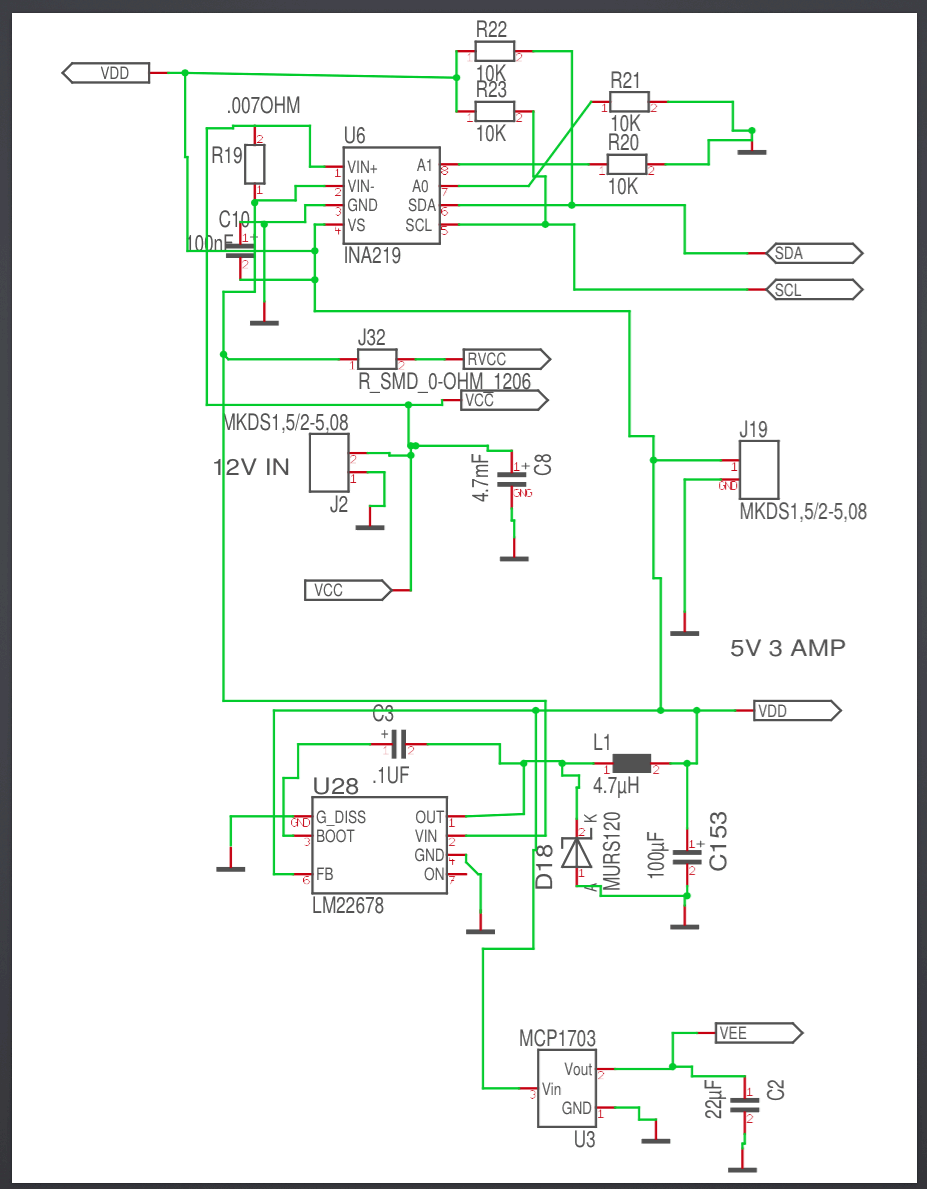We are using the INA219 to measure the Input Voltage and Current of a control board that we have designed and are manufacturing through a local and reputable electronics manufacturing company. The INA219 circuit is essentially a copy of the "Adafruit INA219 Current Sensor Breakout". The Input Voltage is a range between 11.0V DC and 15.5V DC. The maximum current draw of the entire system never exceeds 2 Amps.
We have been manufacturing about 200 of these control boards over the past 6 months and have noticed an abnormal failure rate of the INA219 chip. The problem we are having is that the INA219 IC will start to overheat in what appears to be a random manner. We have tried various power supplies and even 12V batteries but when power is first applied to the circuit board the chip will start to overheat at random powerups. We're not sure why this is and are hoping an expert who knows this chip can help us figure out the source of the problem.
See the attached PNG Image of the Power Circuit for the control board.
We suspect the LM22678 Switching DC regulator may be the culprit (maybe the LM22678 is briefly supplying more than 6 Volts at VDD during system power up) but would think that the switching regulator would not allow more than the 5 Volts at VDD. However, I don't know if switching regulators have weird anomalies during power up that would cause the INA219 to overheat.
Thoughts anyone?


